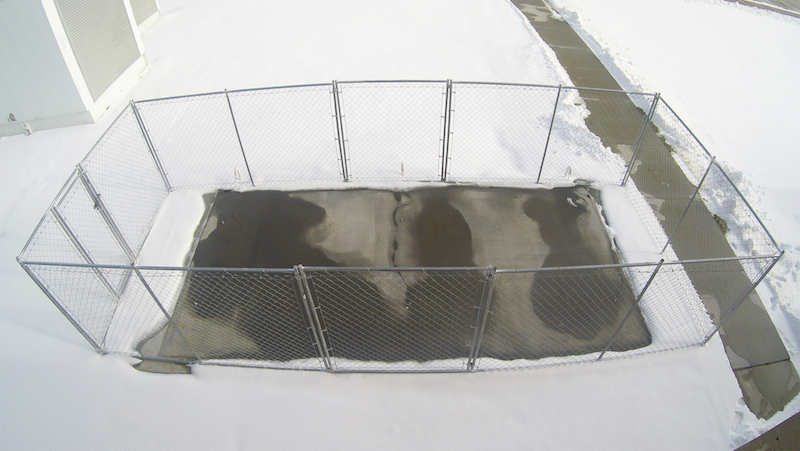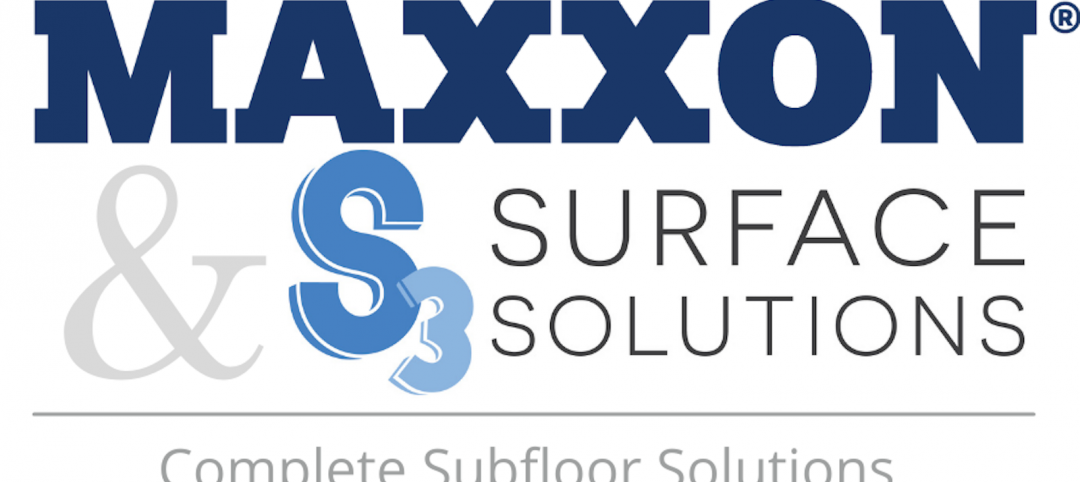Anyone who has driven for any considerable length in bad winter weather has had that moment of panic when one second you feel completely in control of the automobile and the next you feel like a bull rider just trying to hang on for dear life.
Hitting a patch of black ice is scary enough when the outcome is nothing more than a brief moment of wheel spin or slight fishtailing. But the end result to a slippery, snow-covered road can be far worse. From fender benders to fatal accidents, driving in bad winter weather is downright dangerous.
Enter Dr. Chris Tuan, a professor of civil engineering at the University of Nebraska. Tuan has designed a new type of concrete that has the ability to carry a small electric current in order to generate enough heat to melt snow and ice from its own surface, reports the Huffington Post.
The concrete mixture is made up of about 20% steel shavings and carbon particles. This 20% is what allows the concrete to conduct electricity, thus giving it its superpower.
All that needs to be done is to connect the de-icing concrete slabs to a power source and watch them do their job. The electrical resistance in the concrete generates the heat, which in turn melts the snow and ice on its surface.
 Photo: Chris Tuan and Lim Nguyen
Photo: Chris Tuan and Lim Nguyen
The de-icing concrete doesn’t come without its extra costs, however. While regular concrete costs about $120 per cubic yard, Tuan’s concrete is more than double that, at about $300 per cubic yard. So, at least for the time being, the cost of the concrete means it will be used sparingly and just in the areas that need it most.
“De-icing concrete is intended for icy bridges, street intersections, interstate exit ramps, and where accidents are prone to take place,” said Tuan in an interview with UNL. “It’s not cost-effective to build entire roadways using conductive concrete, but you can use it at certain locations where you always get ice.”
Other possible areas of use would be parking lots and airports. Who hasn’t been walking to their car in the morning, after successfully dragging yourself out of bed, only to take that first step into the parking lot just to have your foot slip right out from under your body? That morning walk to the car in the sub-freezing temperatures would be made at least a little bit better if you didn’t have to do it looking like a fawn learning to walk for the first time.
While airports wouldn’t use the new concrete for their runways, it could still help prevent delays during bad weather.
“What they need is the tarmac around the gated areas cleared, because they have so many carts to unload—luggage service, food service, trash service, fuel service—that all need to get into those areas,” Tuan said. “They said that if we can heat that kind of tarmac, then there would be (far fewer) weather-related delays.”
This concrete technology is already in use in a 150-foot bridge near Lincoln, Neb. In 2002, the bridge was inlaid with 52 slabs of the de-icing concrete and has been very successful in melting snow and ice.
While it has the potential to save lives, this de-icing technology has practical, convenient uses, as well. “I have a patio in my backyard that is made of conductive concrete. So I’m practicing what I preach,” Tuan said.
While snowplows and shovels haven’t been rendered useless yet, this new technology has plenty of benefits to help keep people safe during bad winter weather.
Related Stories
Concrete | Mar 17, 2023
American Concrete Institute releases new guide for shotcrete construction
The American Concrete Institute, through the work of ACI Committee 506, has released ACI PRC-506-22: Shotcrete—Guide. The newly introduced guide provides information on materials and properties of both dry-mix and wet-mix shotcrete and covers most facets of the shotcrete process including application procedures, equipment requirements, and responsibilities of the shotcrete crew.
Student Housing | Mar 13, 2023
University of Oklahoma, Missouri S&T add storm-safe spaces in student housing buildings for tornado protection
More universities are incorporating reinforced rooms in student housing designs to provide an extra layer of protection for students. Storm shelters have been included in recent KWK Architects-designed university projects in the Great Plains where there is a high incidence of tornadoes. Projects include Headington and Dunham Residential Colleges at the University of Oklahoma and the University Commons residential complex at Missouri S&T.
Concrete | Jan 24, 2023
Researchers investigate ancient Roman concrete to make durable, lower carbon mortar
Researchers have turned to an ancient Roman concrete recipe to develop more durable concrete that lasts for centuries and can potentially reduce the carbon impact of the built environment.
75 Top Building Products | Nov 30, 2022
75 top building products for 2022
Each year, the Building Design+Construction editorial team evaluates the vast universe of new and updated products, materials, and systems for the U.S. building design and construction market. The best-of-the-best products make up our annual 75 Top Products report.
Concrete Technology | Apr 19, 2022
SGH’s Applied Science & Research Center achieves ISO 17025 accreditation for concrete testing procedures
Simpson Gumpertz & Heger’s (SGH) Applied Science & Research Center recently received ISO/IEC17025 accreditation from the American Association for Laboratory Accreditation (A2LA) for several concrete testing methods.
AEC Tech Innovation | Mar 9, 2022
Meet Emerge: WSP USA's new AEC tech incubator
Pooja Jain, WSP’s VP-Strategic Innovation, discusses the pilot programs her firm’s new incubator, Emerge, has initiated with four tech startup companies. Jain speaks with BD+C's John Caulfield about the four AEC tech firms to join Cohort 1 of the firm’s incubator.
Products and Materials | Feb 24, 2022
MAXXON® Corporation announces strategic affiliation with S3 Surface Solutions
Maxxon® Corporation, creator of Gyp-Crete® and a leader in the underlayment industry for 50 years, has aligned with S3 Surface Solutions, an innovative manufacturer of products that address problematic concrete slabs, to bring innovative, technology-driven subfloor preparation solutions to the flooring industry.
Sponsored | Reconstruction & Renovation | Jan 25, 2022
Concrete buildings: Effective solutions for restorations and major repairs
Architectural concrete as we know it today was invented in the 19th century. It reached new heights in the U.S. after World War II when mid-century modernism was in vogue, following in the footsteps of a European aesthetic that expressed structure and permanent surfaces through this exposed material. Concrete was treated as a monolithic miracle, waterproof and structurally and visually versatile.
Sponsored | Resiliency | Jan 24, 2022
Blast Hazard Mitigation: Building Openings for Greater Safety and Security
3D Printing | Jan 12, 2022
Using 3D-printed molds to create unitized window forms
COOKFOX designer Pam Campbell and Gate Precast's Mo Wright discuss the use of 3D-printed molds from Oak Ridge National Lab to create unitized window panels for One South First, a residential-commercial high-rise in Brooklyn, N.Y.

















